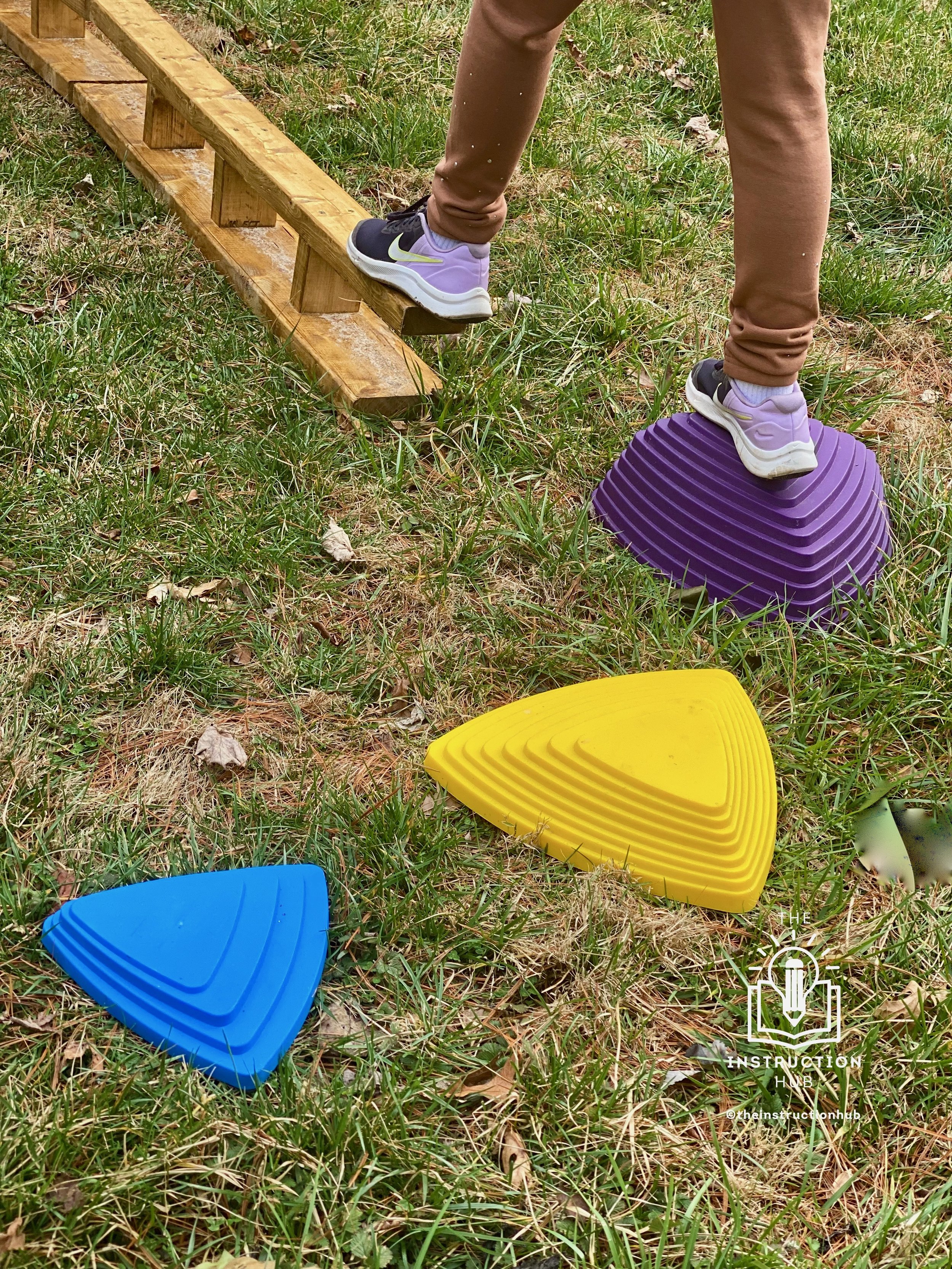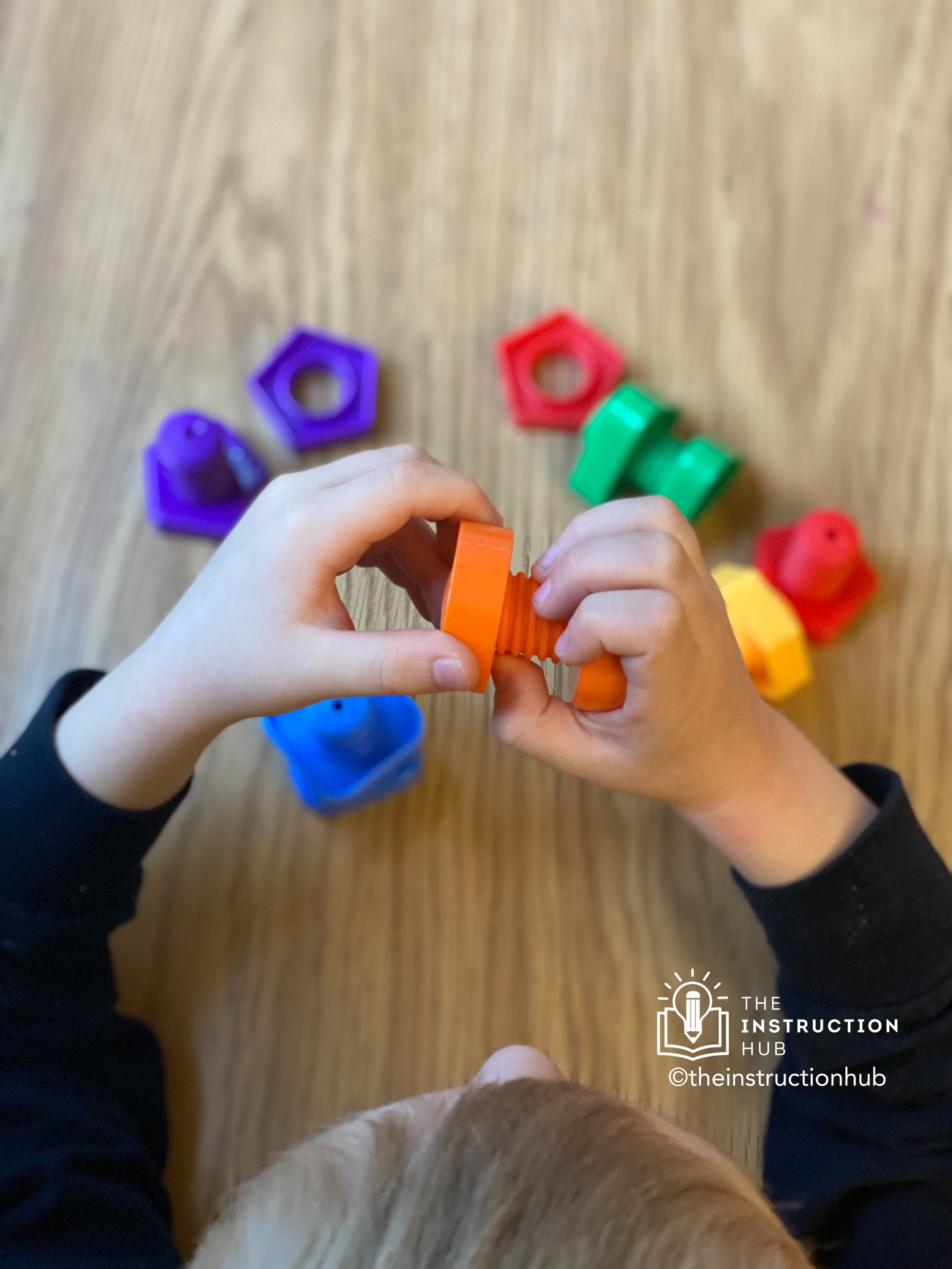5 Tips to Improve Pencil Grasp
About Guest Blogger Shea Ferretti:
”I grew up in New York and graduated from Dominican College with a Masters in Occupational Therapy. I love working with children because there is always an element of surprise. Every day is an opportunity for learning and growth for both the family and the therapist. I love collaborating with families to find strategies and solutions that work for every unique family’s daily routines. My experience includes SOS Feeding, sensory regulation, and handwriting. In my spare time I enjoy staying active, hiking, paddle boarding, baking, spending time with my dog, and crafting.”
There are many foundational skills outside of the muscles in the hand that come into play for efficient pencil grasps. Listed below are a few ways you can help promote a functional pencil grasp by targeting the underlying skills the best way kids know how to learn…PLAY!
Postural Control
Postural control, or core strength, provides a stable foundation and base of support within the body. Core strength is essential for the progression of other developmental skills as it is our base for controlling the body.
Core Strengthening Activities:
Animal Walks
- Crab walk
- Bear crawls
- Frog jumps
Provide alternative positions for children to complete work or activities
- Laying on their stomachs
- Kneeling position
- Quadruped or crawling position
Obstacle Course
- Create a simple 3 or 4 step obstacle course with everyday items
- Have kids crawl under tables or chairs, jump on cushions, or make a balance beam with tape!
Wrist Extension
Working on a vertical surface helps to promote wrist extension and shoulder strength, which are two foundational skills in promoting a better pencil grasp and handwriting. Wrist extension is needed for a functional grasp pattern to position the hand during writing tasks properly. When a wrist is flexed or curved toward the student's body when writing, this position limits the use of fingers. Working on a vertical surface promotes wrist extension to allow the stability of the wrist and optimal movement of the fingers.
Wrist Extension Activities:
- Completing activities or worksheets taped on the wall
- Slant board for writing tasks or drawing tasks
- Laying under the surface like a table or chair on the child’s back with paper taped to the surface
- Stick wet foam pieces to the window or use Squigz on the window
- Rolling large “snakes” with play dough
Fine Motor Dexterity & Manipulation
The ability to control and isolate finger and hand from the forearm, elbow, and shoulder is defined as distal mobility. Distal mobility is essential for a dynamic pencil grasp for writing. This dynamic movement allows for finger isolation; thus, the child's fingers control the writing utensil and not the entire arm, elbow, core. This limits proximal movements of the arm, creating efficient and legible writing.
Distal Mobility Activities:
- Color in small spaces like pattern sheets
- Stringing small beads
- Small pegs on a pegboard
- Peel and stick stickers
- Rolling play dough into small balls with fingertips
Separation of the Two Sides of a Hand
We can separate the movements of our hands into two sides. We typically call the side of our hand with the thumb, index, and middle precision side. The precision side allows for fine motor control. At the same time, the ring and pinky finger side of our hand is called the power side. The power side allows for strong base support, while the precision side allows smooth and delicate movements. Our precision side is most optimally controlled when our power side is curled up into our palm, creating a solid foundation for the wrist. Using both sides of the hand separately while completing one task is essential for an efficient grasp, fluency, and control.
Separation of the Sides of the Hand Activities:
- Coin and slot activities
- Flipping coins on a surface
- Trigger toys (spray bottle)
- Snapping the fingers
- Screw and unscrew nuts, bolts, or lids on containers
Open Thumb Web Space
The thumb webspace is between your thumb and index finger. When you make an "OK" sign with the thumb and index, this area makes an "O." When holding a pencil, an open webspace is necessary for improved endurance, efficiency, and fluency. An open thumb webspace is necessary for in-hand manipulation skills, assisting the fingers with moving items in hand.
Open Thumb Web Space Activities:
- Popping Bubble Wrap
- Clothespins or tweezers to transfer objects
- Water dropper activities
- Connect 4 or checkers and pick up pieces with a pincer grasp (thumb and index)
- Cut a tennis ball to create a slit and squeeze with hand to pick up small objects.
Heidi Schwellnus, Heather Carnahan, Azadeh Kushki, Helene Polatajko, Cheryl Missiuna, Tom Chau; Effect of Pencil Grasp on the Speed and Legibility of Handwriting in Children. Am J Occup Ther November/December 2012, Vol. 66(6), 718–726. doi: https://doi.org/10.5014/ajot.2012.004515





